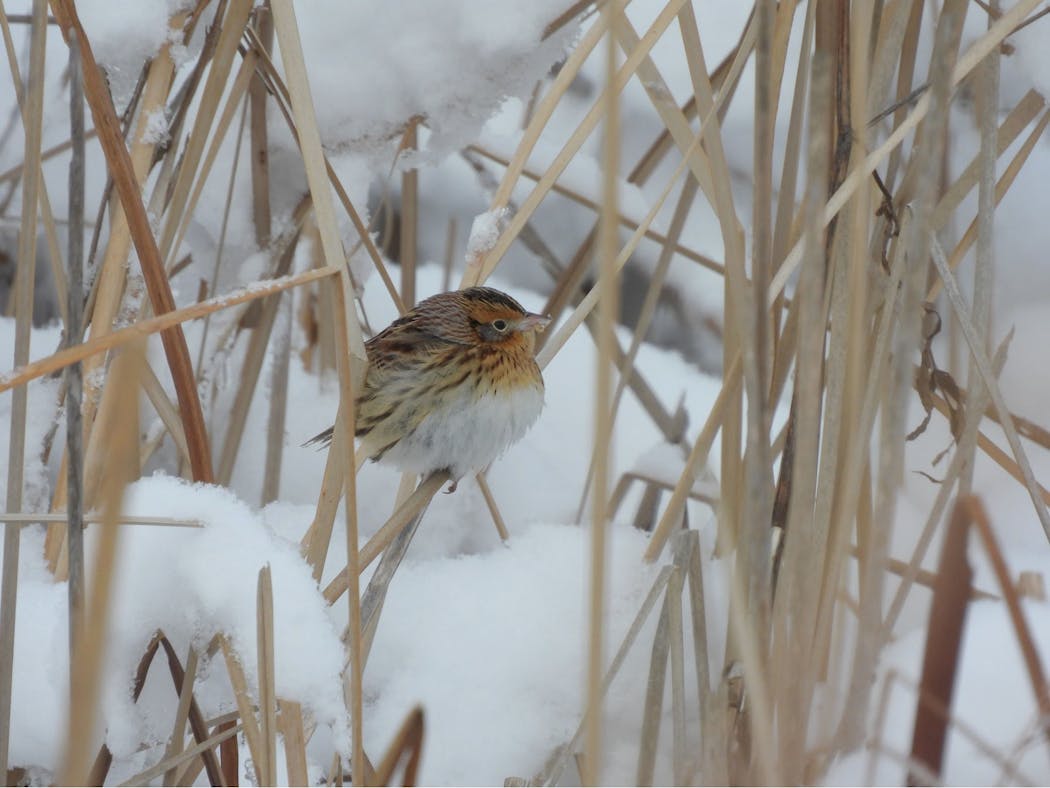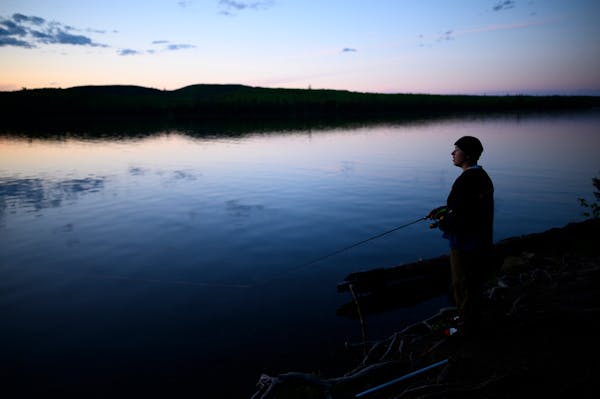While the winter bird population in Minnesota is less diverse than in other seasons, it's perhaps a less-is-more proposition this time of year.
That presents opportunities for the curious and the intrepid to connect and interact with birds and the larger natural world.
Many people from all directions head north. Sax-Zim Bog, about an hour northwest of Duluth, is acclaimed as a winter destination. And for good reason: the land attracts boreal forest-loving species like great gray and northern hawk owls, pine grosbeaks and other Arctic breeding species.
Red Hill Birding, a Chicago-area tour guide, has a sold-out trip beginning Sunday with the bog as the centerpiece.
Tour leader Adam Sell and his group will set up in Duluth. Red Hill first led groups to Minnesota's far north several years ago; Sell himself first came in 2010. Owls in particular are an attraction for Red Hill customers, who know northern owl hawks and occasionally great grays are diurnal — active during the day. Think of the images of the latter in pursuit of prey that have filled publications and social media platforms.
Sell is aware of the rabid interest and extends that awareness to his bird-watching charges. He said there are different perspectives among birders of what defines a safe distance.
"A close approach is OK, but we are stressing these birds out," he said. "Being a wild bird is tough enough and being a wild bird in the north where resources are limited is even tougher."
Sell said among Red Hill's domestic and international birding trips, winter journeys to Minnesota are favorites.
"Every year we take out new people, or older birders who are finally taking a trip to the bog," he said.
Close connection
Laura Erickson of Duluth knows Sax-Zim well but needn't travel far. Her backyard supplies the connection to nature she covets, she said.
Erickson, whose advocacy for the feathered community spans radio, books and podcasts, is enamored of one winter resident.
"I am a big fan of the chickadee," she said. "That is one bird I can count on."
At a third of an ounce (or the weight of a quarter), the bird is the ultimate cold-weather survivor. Black-capped chickadees are ubiquitous across the state's mixed forests, and in Northwoods habitats like Sax-Zim, people might encounter the boreal chickadee, known for its brown cap and rusty-colored sides.
Chickadees feed during the day — and prodigiously, sometimes caching seeds and other food sources like fatty peanut butter in the cracks of trees and under tree needles. They've adapted to the deep cold by lowering their body temperatures at night to conserve energy.
A birder since 1975 — her radio show "For the Birds" is the longest-running of its kind in the nation — Erickson rattled off other joys of winter ("I love owls") and said it perhaps is an underappreciated time to bond.
"There is not much else to do. You can pay close attention to what is happening," she added, pointing to what amounts to playground behavior at yard feeders. Some birds bully or are assertive, while others shrewdly enter the picture, disappear and return later.
Erickson has sharpened her senses at her East Duluth home around a regular visit from what appears to be the same pileated woodpecker. Early and on the coldest mornings, it arrives. She recognizes it by a band on one leg, and has started calling it "BB" for Banded Boy.
"We are so rich in Minnesota as far as what we have inherited in terms of birds," Erickson said, "and just so lucky."
Steve Weston, who coordinates the citizen-led Christmas Bird Count in Minnesota, said the joy now is also in the overlap of what's predictable and, sometimes, unexpected.
Weston's mind goes to the Bass Ponds in the Minnesota Valley National Wildlife Refuge in the Bloomington area, a frequent site for walks with naturalists from the refuge center. One birdwatcher's upload on the eBird app Wednesday showed hundreds of mallards, hooded mergansers, red-bellied, downy and hairy woodpeckers, white-breasted nuthatches and trumpeter swans, among other birds.
And no one expected the orange-tinged LeConte's sparrow ("famously elusive," writes the Cornell Lab of Ornithology) observed the weekend before Christmas last December. It was the first seen ever in a Minnesota count, Weston said.
This year's count across Minnesota still is getting tabulated, but Weston has heard from count circle leaders of horrible weather and of volunteers who didn't show up.
Still, some of those who did stay committed experienced some of their best birding days, he said. And that's birding.
"You never know. The birds are out. There are birds to be found. It's even more fun because you don't expect it in winter."

Twins call up pitching prospect Travis Adams to bullpen

Twins open homestand with loss to Blue Jays, Jeffers ejected after critical call

Federal judge approves $2.8B settlement, paving way for US colleges to pay athletes millions

United South Central wins Class 1A softball title with overpowering pitching




